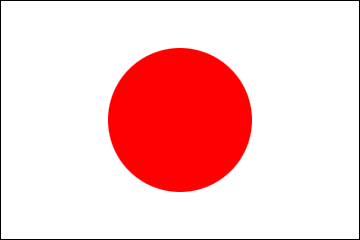JET Programme Series: Baby’s first snow - Rhianna McKenzie
2023/1/30
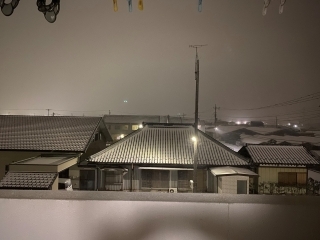
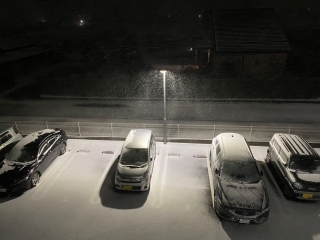
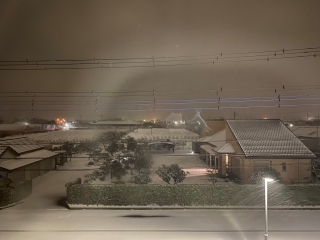
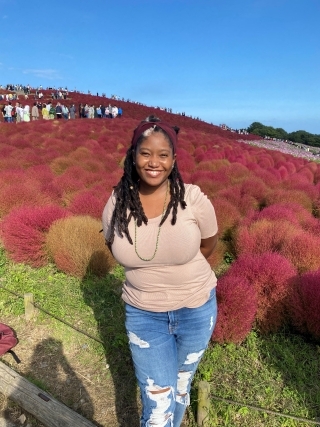
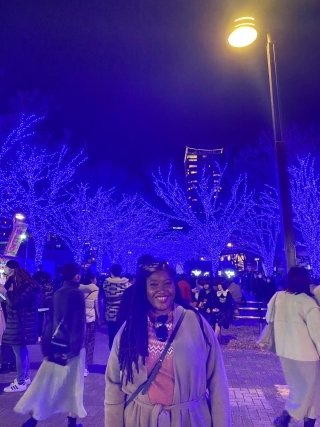
I’ve waited 32 long years to see snow. I’m not exactly a baby, but the way I bounced up and down when it first started snowing in my city, you would swear I was. Ibaraki prefecture is located on the Eastern Pacific Coast of Japan. Because of how close I live to the ocean, it very rarely snows in my city. From what I’ve heard, the city only sees snow just about three times a year.
While a few of my colleagues in Northern Japan have been under snow since the turn of the season, I had to wait until the end of January. It was, however, certainly worth the wait.
I had been monitoring the weather app for weeks when I finally saw the snow icon appear on the 24th. I patiently waited for the predicted 8pm snowfall, peeping out the window every chance I got. As a member of the Ibaraki Association of JETs, I was in a meeting with my colleagues when I peeped again and saw the snow through the glass door.
Hailing from countries like Canada and America, they all cackled as I screamed like one of my high schoolers, knocking things over in my bedroom to throw on my coat and scarf to go outside. It was certainly magical for all of ten minutes before the wind picked up and blew my overexcited behind back inside. I took a few photos and scurried back to my warm apartment to admire the snow through my window. It has certainly been my most memorable moment to date since moving here.
When I first arrived in Japan, I was told my new home, Ibaraki prefecture had been consistently ranked online as the ‘least attractive’ prefecture in Japan for seven years. In 2022, we made an ambitious leap from #47 to #46. I, however, could not disagree more. Not that I’ve seen much else of the country, but I think Ibaraki is absolutely stunning.
I have gotten even stranger looks from locals and foreigners who have been in Ibaraki a while when I tell them where in Ibaraki I live. Kamisu is a small, industrial city. It’s biggest claim to fame is its proximity to Kashima City, home of the Kashima Antlers, arguably the most popular football team in the country. There are no trains running through the city and, despite its proximity to Tokyo, locals must take a bus to get there.
Kamisu is an interesting cross-section of industry and agriculture. As one of the prefectures with the highest agricultural output for the entire country, there is endless agricultural land. Kamisu is no different. When I step outside my apartment, I can see warehouses to the left and farmland to the right.
Ibaraki is famous for its melons, lotus roots, sweet potatoes, and green peppers nationally. Seafood such as Kashima open sea clams and angler fish, as well as animal products such as Hitachi beef, are also quite recognisable. The prefecture is a base provider of food for the Tokyo Metropolitan Area. This bodes well for me as a vegetarian. I thought I would have a problem eating here as Japanese cuisine is most recognised for its meat and seafood. I have to do a bit more cooking than I am used to, but I have been nothing short of well—maybe even overly—fed since my arrival.
Many people here also do their own personal farming and my lovely coworkers often bring me food from their gardens. No disrespect to Trini melons, but the ones here are honestly the sweetest I’ve ever had.
I have done quite a bit of solo exploration since I’ve been here. I have made wonderful friends from all over the world, but it’s a big place and we all live so far away from each other. At first, I thought that would be a deterrent but, as it turns out, I have quite enjoyed pushing myself past my comfort zone.
During the winter break, I took a drive along the coast to the capital, Mito City, to visit Aqua World Ibaraki Prefectural Oarai Aquarium which overlooks the Eastern Pacific Coast.
The Kashima-Jingu Shrine, a short 30-minute drive from my apartment, is one of the most visited Shinto shrines in the prefecture between January 1 and 3 for New Year pilgrims who go to pray for good fortune in the New Year.
I’ve also taken the one-and-a-half-hour bus to Tokyo a time or two and visited the famous Shibuya crossing and the Harajuku district.
There is so much more to explore, in Ibaraki alone. Fukuroda Falls freezes over for a few weeks every winter inviting adrenaline junkies from all over the world to climb the ice. The Ryujin Suspension Bridge in Hitachiota City is hoisted above a forested area with trees that change colours with the season. Even more adrenaline junkies make their pilgrimage to the bridge for casual bungee jumping. I am nowhere near brave enough to attempt either of these things but I’ll be happy to watch. Needless to say, Ibaraki is not nearly as unattractive as the locals think it is, at least, not to me. I have fallen head over heels in love with my little city and have made meaningful connections with the people who live here. Trips to the Konbini brighten my day as some of the workers even try speaking to me in English.
I can’t wait for the summer to dip my feet in the ocean. I am an island girl, after all. Fortunately, I live ten minutes away from the Ocean. While the locals enjoy surfing in the freezing water, I’m fine waiting for the summer. My adventurous spirit has its limits.
JET Series: Baby's First Snow (Japanese Embassy's Facebook)
JET Programme Series Archives
While a few of my colleagues in Northern Japan have been under snow since the turn of the season, I had to wait until the end of January. It was, however, certainly worth the wait.
I had been monitoring the weather app for weeks when I finally saw the snow icon appear on the 24th. I patiently waited for the predicted 8pm snowfall, peeping out the window every chance I got. As a member of the Ibaraki Association of JETs, I was in a meeting with my colleagues when I peeped again and saw the snow through the glass door.
Hailing from countries like Canada and America, they all cackled as I screamed like one of my high schoolers, knocking things over in my bedroom to throw on my coat and scarf to go outside. It was certainly magical for all of ten minutes before the wind picked up and blew my overexcited behind back inside. I took a few photos and scurried back to my warm apartment to admire the snow through my window. It has certainly been my most memorable moment to date since moving here.
When I first arrived in Japan, I was told my new home, Ibaraki prefecture had been consistently ranked online as the ‘least attractive’ prefecture in Japan for seven years. In 2022, we made an ambitious leap from #47 to #46. I, however, could not disagree more. Not that I’ve seen much else of the country, but I think Ibaraki is absolutely stunning.
I have gotten even stranger looks from locals and foreigners who have been in Ibaraki a while when I tell them where in Ibaraki I live. Kamisu is a small, industrial city. It’s biggest claim to fame is its proximity to Kashima City, home of the Kashima Antlers, arguably the most popular football team in the country. There are no trains running through the city and, despite its proximity to Tokyo, locals must take a bus to get there.
Kamisu is an interesting cross-section of industry and agriculture. As one of the prefectures with the highest agricultural output for the entire country, there is endless agricultural land. Kamisu is no different. When I step outside my apartment, I can see warehouses to the left and farmland to the right.
Ibaraki is famous for its melons, lotus roots, sweet potatoes, and green peppers nationally. Seafood such as Kashima open sea clams and angler fish, as well as animal products such as Hitachi beef, are also quite recognisable. The prefecture is a base provider of food for the Tokyo Metropolitan Area. This bodes well for me as a vegetarian. I thought I would have a problem eating here as Japanese cuisine is most recognised for its meat and seafood. I have to do a bit more cooking than I am used to, but I have been nothing short of well—maybe even overly—fed since my arrival.
Many people here also do their own personal farming and my lovely coworkers often bring me food from their gardens. No disrespect to Trini melons, but the ones here are honestly the sweetest I’ve ever had.
I have done quite a bit of solo exploration since I’ve been here. I have made wonderful friends from all over the world, but it’s a big place and we all live so far away from each other. At first, I thought that would be a deterrent but, as it turns out, I have quite enjoyed pushing myself past my comfort zone.
During the winter break, I took a drive along the coast to the capital, Mito City, to visit Aqua World Ibaraki Prefectural Oarai Aquarium which overlooks the Eastern Pacific Coast.
The Kashima-Jingu Shrine, a short 30-minute drive from my apartment, is one of the most visited Shinto shrines in the prefecture between January 1 and 3 for New Year pilgrims who go to pray for good fortune in the New Year.
I’ve also taken the one-and-a-half-hour bus to Tokyo a time or two and visited the famous Shibuya crossing and the Harajuku district.
There is so much more to explore, in Ibaraki alone. Fukuroda Falls freezes over for a few weeks every winter inviting adrenaline junkies from all over the world to climb the ice. The Ryujin Suspension Bridge in Hitachiota City is hoisted above a forested area with trees that change colours with the season. Even more adrenaline junkies make their pilgrimage to the bridge for casual bungee jumping. I am nowhere near brave enough to attempt either of these things but I’ll be happy to watch. Needless to say, Ibaraki is not nearly as unattractive as the locals think it is, at least, not to me. I have fallen head over heels in love with my little city and have made meaningful connections with the people who live here. Trips to the Konbini brighten my day as some of the workers even try speaking to me in English.
I can’t wait for the summer to dip my feet in the ocean. I am an island girl, after all. Fortunately, I live ten minutes away from the Ocean. While the locals enjoy surfing in the freezing water, I’m fine waiting for the summer. My adventurous spirit has its limits.
JET Series: Baby's First Snow (Japanese Embassy's Facebook)
JET Programme Series Archives
